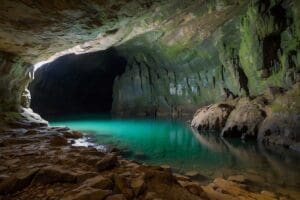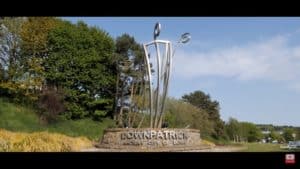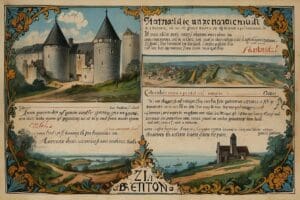Mapping Myths Explored: Navigating the Landscape of Irish Mythology
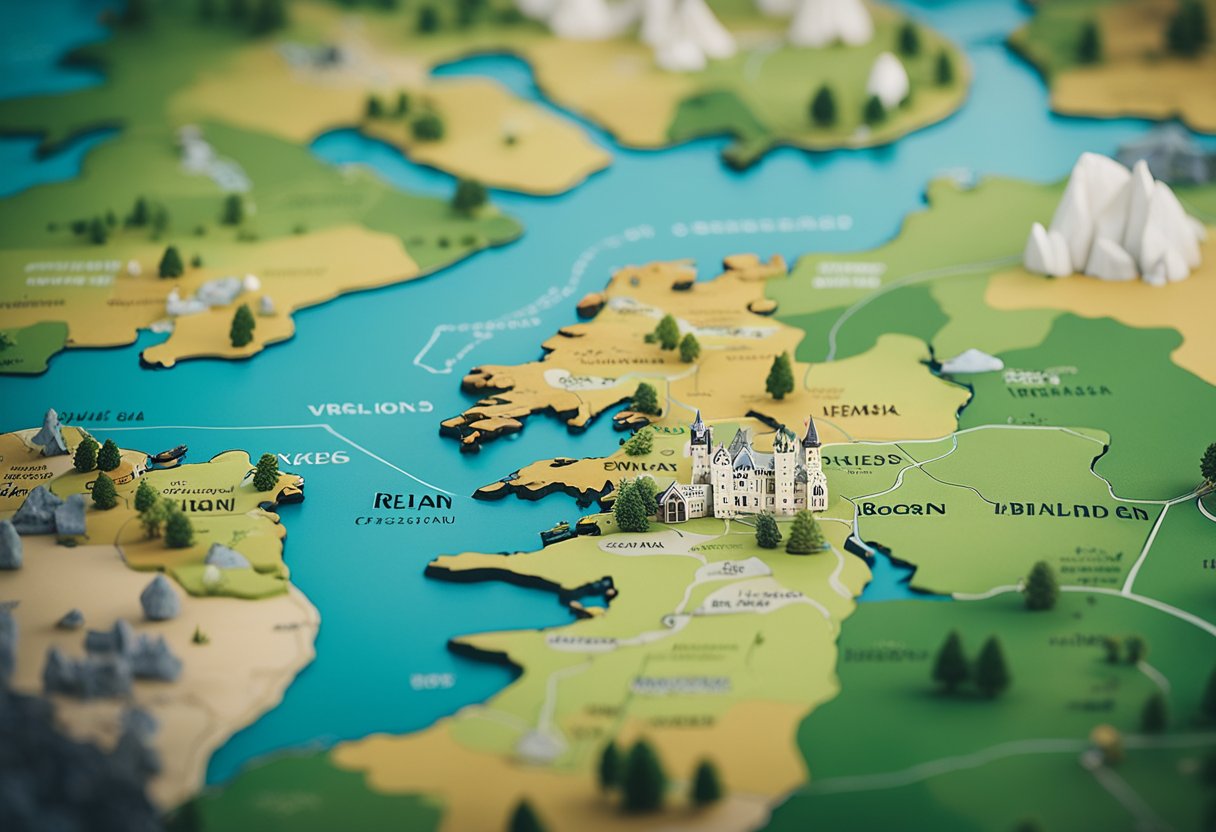
Updated On: April 22, 2024 by Maha Yassin
Ireland is a tapestry woven with the vibrant threads of myth and folklore, with each region offering a different tale hue. Our journey through Ireland’s folklore regions explores the intricate map of narratives passed down through generations. We uncover the landscape of Irish mythology, introducing the key characters and archetypes that have become bedrocks of cultural identity. From the mighty heroes of the Ulster Cycle to the enigmatic figures of the Fenian Cycle, this interactive voyage delves into the stories that have shaped Irish literature and language.
Embarking on this adventure across Ireland’s provinces immerses us in a world where myth intersects with reality. The ancient tales find their echoes in Ireland’s rolling hills, rugged coastlines, and quaint villages. As we traverse from the mystical Giant’s Causeway in the North to the legendary lakes of Killarney in the South, we witness the fusion of folklore with the landscape. This connection enriches our visit and deepens our understanding of the importance of preserving these tales. The folklore of Ireland is not merely a relic of the past; it continues to evolve, finding new interpretations in modern culture and inspiring efforts to safeguard this precious heritage.
Throughout our journey, we’ll also tap into the folk beliefs and superstitions still alive in the Irish consciousness today. By exploring these living traditions, we uncover the enduring influence of Irish folklore on contemporary life and literature. Whether you are planning your mythical journey or simply seeking answers to frequently asked questions about Ireland’s folklore, we provide the insights to guide your exploration.
The Landscape of Irish Mythology
Ireland’s landscape is more than just scenery; it’s the fabric of many myths and legends where each rock, hill, and water body tells a story of ancient heroes and mystical creatures connecting the land to the otherworld.
Prominent Places in Myths
Ireland’s mythological landscape is dotted with sites linked to tales of old. With its interlocking basalt columns, the Giant’s Causeway is one such place where the legendary giant Finn McCool is said to have created a bridge to Scotland. Our green land has many such locations where the boundary between our world and the mythical otherworld seems thin.
- Hill of Tara – Once the seat of the High Kings of Ireland, it’s steeped in mythical royalty and druidic ceremonies.
- Hill of Uisneach – Considered the mythological and sacred centre of Ireland, it’s associated with festivals, governance, and gatherings in lore.
Natural Landmarks and Their Legends
Ireland’s natural features are not just landscape elements; they serve as an iconic backdrop to many a heroic saga and supernatural tale. For example, the mountains of our land are often described as dwelling places of gods or gateways to the otherworld.
- Ben Bulben in County Sligo – This distinctive mountain formation is associated with the epic Cycle of Kings and the great warrior Diarmuid Ua Duibhne.
- Lough Gur in County Limerick – A lake full of enchanting tales featuring magical inhabitants and a gateway to the otherworld.
Our island, rich with literal and mythological bridges, spans more than mere rivers; it bridges the gap between the every day and the magical, weaving a tapestry of folklore deep into the Irish soul.
Origins and Evolution of Irish Folklore
Before delving into the intricacies of Irish folklore, we must acknowledge its rich tapestry woven from the threads of Irish mythology, history, and culture. This section will explore the journey from ancient pagan beliefs to their subsequent intertwining with Christian teachings and the synthesis of myths into Ireland’s historical narrative.
From Pagan Roots to Christian Interpretations
Irish folklore has its origins deeply embedded in Celtic culture and paganism. Early Irish society was hallmarked by an oral tradition where bards and storytellers passed down legends and tales that formed the bedrock of what we now recognise as Irish mythology. These stories were not just fanciful tales but a portrayal of the Celts’ worldview and spiritual beliefs. With the advent of Christianity, many pagan deities and characters were reinterpreted within a Christian framework, maintaining their importance in Irish lore while aligning with the new religious narratives.
Our ancestors left us with rich narratives such as those found in the Book of Invasions, which chronicles the mythological origins and lineage of the Irish people. It traces the story from Noah’s granddaughter to the Tuatha Dé Danann, a semi-divine race in Irish lore, illustrating the ingenuity with which the pre-Christian stories were woven into a biblical context.
Historical Synthesis of Myths
Throughout Ireland, mythology and folklore have been inextricably linked with each distinct cultural phase. The shift from paganism to Christianity did not erase the past; instead, it led to a synthesis where Christian monks often recorded pagan myths. In these written accounts, historical events were frequently infused with mythological elements, adding depth to Ireland’s cultural narrative.
The Book of Invasions stands as a testament to this blending, portraying historical invasions and societal changes through the lens of mythology. This historical synthesis is evident in texts and has been perpetuated through our oral tradition, keeping the history alive and evolving with each telling.
Our engagement with these myths underscores our commitment to preserving the distinct narrative of Ireland, ensuring that the evolution of our folklore remains a beacon of our culture and history for generations to come.
Key Characters and Archetypes
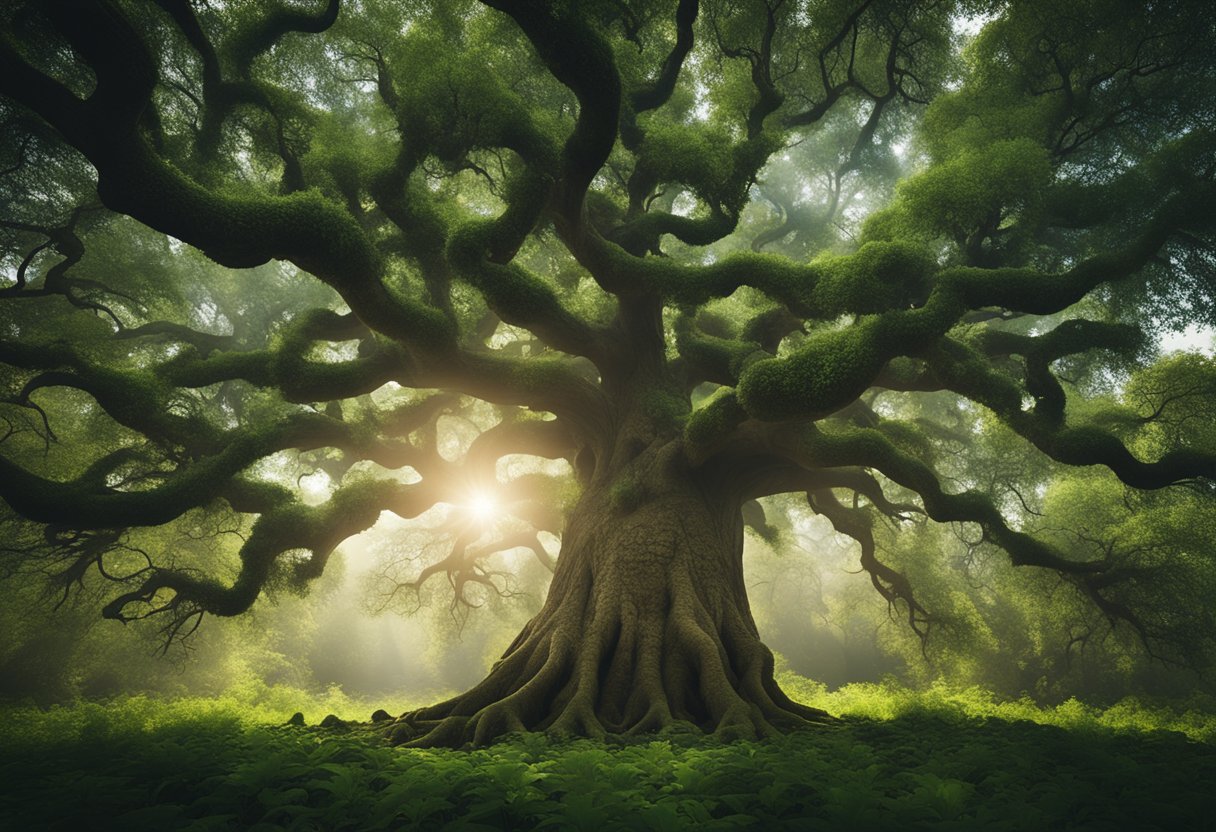
In exploring Ireland’s vibrant folklore, we uncover a tapestry of mythical figures woven into the fabric of its cultural heritage. These archetypes play pivotal roles in the narrative landscape of the Emerald Isle.
Gods and Goddesses
Irish mythology brims with deities who embody the forces of nature and human attributes. The Tuatha Dé Danann, a pantheon of god-like figures, includes the Dagda, known for his control over life and death, and Lugh, the multi-talented warrior and king. Among the goddesses, the fierce Morrígan, representing war and fate, stands out for her powerful presence in the mythos.
- Dagda: Master of life and death, associated with fertility, weather, and agriculture.
- Lugh: Skilled in many arts and crafts, depicted as a formidable warrior and benevolent king.
- Morrígan: Goddess of war, fate, and sovereignty, often portrayed as a shape-shifting figure.
Heroes and Mortals
Legendary mortals and heroes form the backbone of many Irish tales, exhibiting virtues and flaws alike. The mighty warrior Cúchulainn, known for his heroic deeds in the Ulster Cycle, is revered for his unmatched prowess in battle. Fionn mac Cumhail, the celebrated leader of the Fianna, and his son Oisín are central figures, with their stories encapsulating heroism, adventure, and romance.
- Cúchulainn: Famed for his extraordinary martial skills, unrivalled in the annals of Ulster.
- Fionn mac Cumhail: Renowned warrior and leader, his wisdom and strength are legendary.
- Oisín: Poet and warrior embodies the complexities of love and heroism.
Villains and Creatures
Our folklore has antagonists and mythical beings that challenge heroes and intrigue listeners. With her foreboding wail, the banshee signals impending death while the mischievous leprechaun guards his elusive pot of gold. The sidhe, fairy folk residing in ancient mounds, hold a significant place in Irish legends, often interacting with mortals in unexpected ways.
- Banshee: A messenger from the otherworld, her cries portend the passing of a family member.
- Leprechaun: Crafty and elusive, symbolising good fortune and Ireland’s rich storytelling tradition.
- Sidhe: The fairy folk tied to the ancient mounds of Ireland, embodying the land’s magic.
Folklore Across Ireland’s Provinces
Before we embark on our journey, let us prepare to uncover the rich tapestry of myths and legends woven into the very fabric of Ireland’s landscape. These tales are not merely stories; they echo our history, shaped by the hills, rivers, and ancient stones, and encompass each province’s identity.
Leinster’s Lore
Leinster, encompassing Ireland’s capital, Dublin, is steeped in legendary narratives. Here, we find fables of the Fianna, a band of warriors told through the Fenian Cycle, whose deeds are imprinted upon the hills and vales of this region. With its pulsing heart, Dublin itself plays host to many such stories that have been passed down through generations.
Munster’s Myths
With its rugged coastline and eminent peaks, Munster holds myths bursting with eloquence and drama. One cannot explore Munster without whispering the tales of fearsome warriors and enchanted realms. Tír na nÓg, the land of eternal youth referenced in Irish folklore, is a testament to the magical escapades believed to have occurred in the verdant groves and alongside the sweeping shores of this region.
Connacht’s Chronicles
Connacht is a landscape where the chronicles of heroes and demigods seem to rise from the mist. Sligo is a jewel in Connacht’s crown, with the towering Benbulben providing the backdrop for many stories, such as those from the Ulster Cycle, where epic battles and timeless adventures permeate through the soil and sea air.
Ulster’s Sagas
Lastly, we find ourselves in Ulster, where the sagas culminate in an anthology of bravery and tribulation. Ulster’s rugged domain is the realm of the famous legend Cúchulainn, a hallmark of the Ulster Cycle, who is said to have stood valiantly defending the north against overwhelming tides of enemies. The traditional royal seat of Ulster, Emain Macha, is where these stories find their roots, biding in the legacy of the land.
Influence of Irish Folklore on Language and Literature
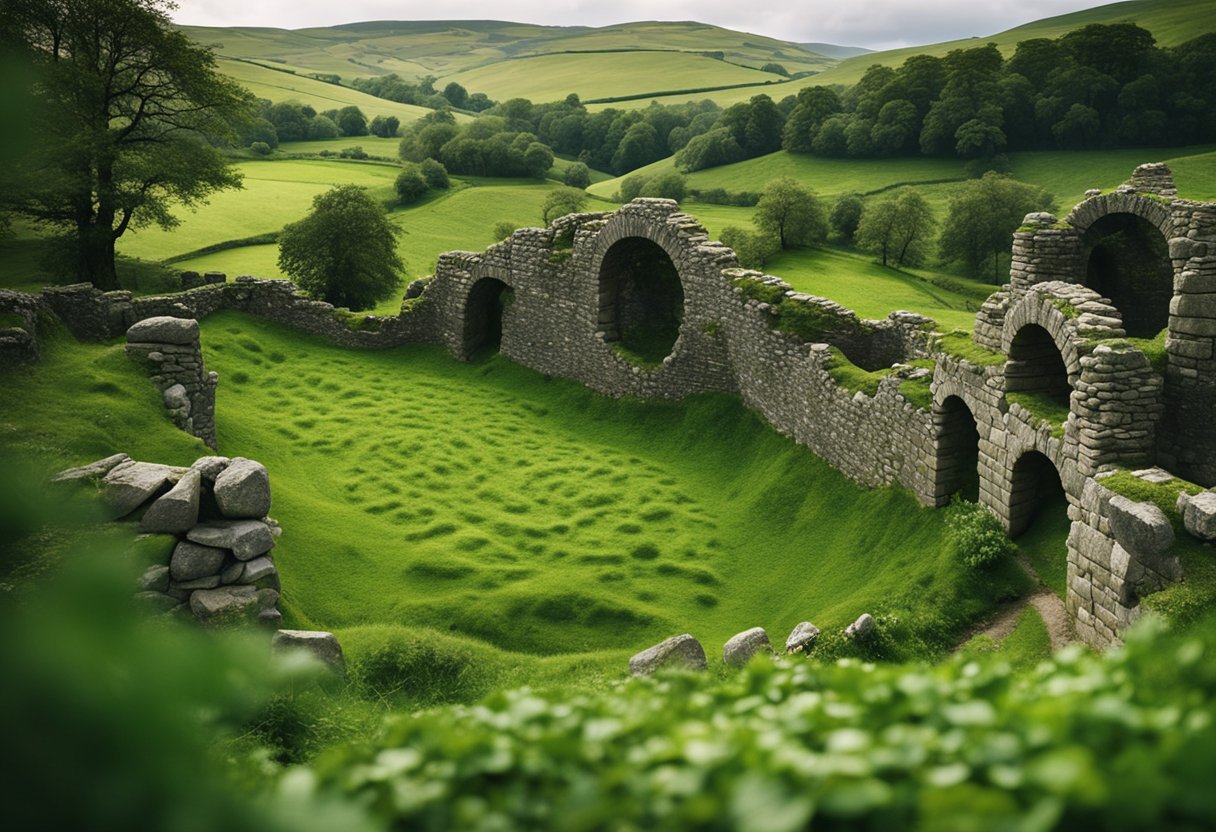
Irish folklore has profoundly influenced the use of language and the fabric of literature, weaving narratives that transcend time and place.
Folklore in Modern Writing
Irish folklore has found its way into modern literature, leaving an indelible mark on language and storytelling. We see this influence in the works of globally renowned authors like James Joyce, whose text is studded with allusions to Irish mythology and folklore. The Abbey Theatre, a cornerstone of Irish culture, regularly features productions rooted in these local legends, showcasing how folklore can colour and shape dramatic writing. By embedding folklore into their narratives, modern authors and playwrights pay homage to the cultural legacy of Ireland and reinvigorate the rich tapestry of Gaelic storytelling traditions.
Gaelic Language and Storytelling
The Gaelic language, with its rich vocabulary steeped in the natural landscape and a deep sense of history, serves as the original vessel for Irish stories and folklore. The act of storytelling, or “seanchaí,” has been pivotal in passing down these tales, ensuring the survival of these cherished narratives. Even as the use of the Gaelic language has faced challenges over the centuries, the stories preserved in the language continue to be a source of cultural identity and inspiration. They resonate in modern Irish literature and significantly shape the artistic expression found within Ireland’s literary community.
Traditional Tales and Modern Interpretations
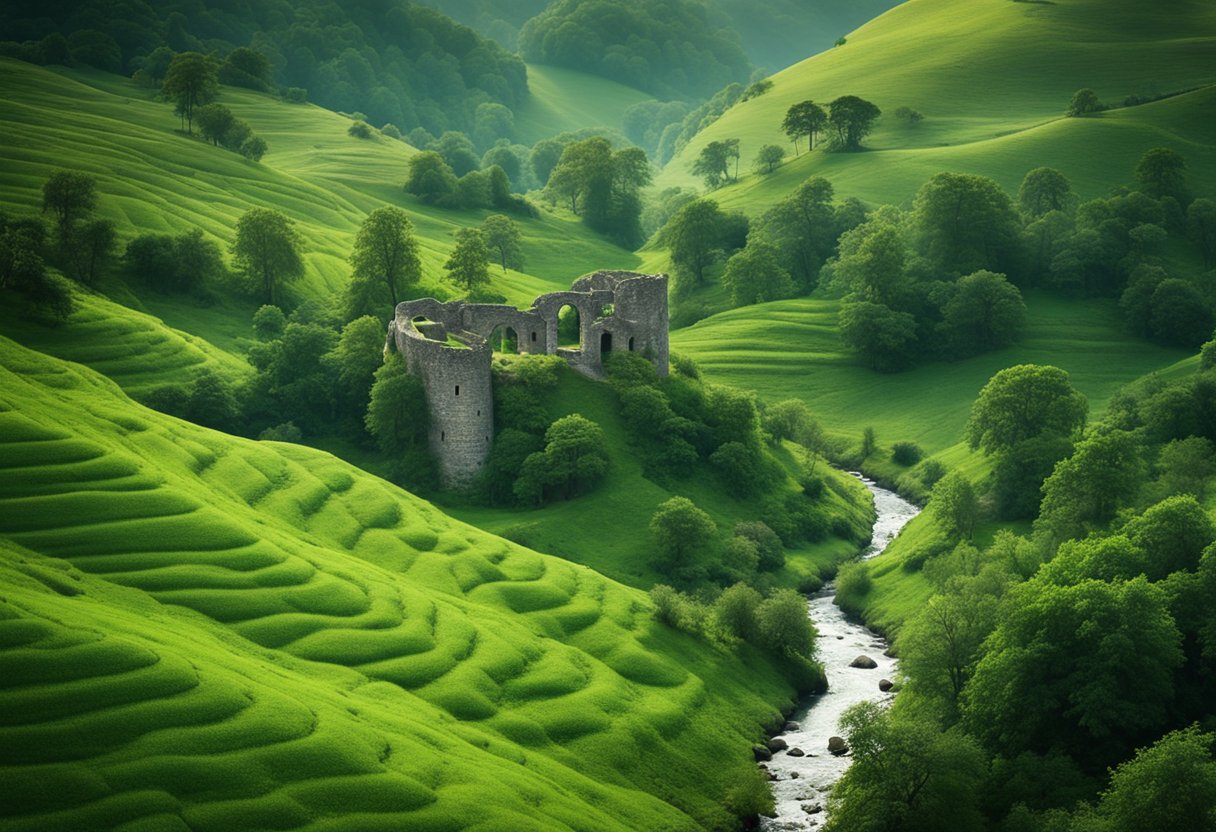
Ireland’s folklore is a tapestry woven from stories that have traversed time from their origins in oral tradition to their place in today’s digital and entertainment spheres. We are poised to explore how these tales have transformed and adapted to the modern age.
From Oral Traditions to Digital Narratives
The migration of Irish legends and myths from the ancient craft of oral storytelling to contemporary digital platforms has been a remarkable evolution. We’ve witnessed the traditional tales, so integral to Irish heritage, being retold in new, accessible formats, reaching a wider audience than ever before. Younger generations are now interconnected with these myths through various mediums, such as online forums, interactive e-books, and podcasts. These digital narratives maintain the essence of the stories while infusing them with fresh, innovative elements that captivate children and adults alike.
Adaptation in Arts and Entertainment
Our rich storytelling tradition isn’t confined to private listening; it’s a dynamic source of inspiration within arts and entertainment. Theatre productions and films frequently adapt Irish folklore, making characters and plots relevant to contemporary audiences. These adaptations often balance staying true to the source material and reimagining aspects to suit modern tastes in entertainment. For example, traditional characters in legends may be depicted with new life and complexity, reflecting modern values and sensibilities. Through this, Irish folklore survives and thrives, allowing children and adults to appreciate the narratives in a context that resonates with them.
The Intersection of Myth and Reality
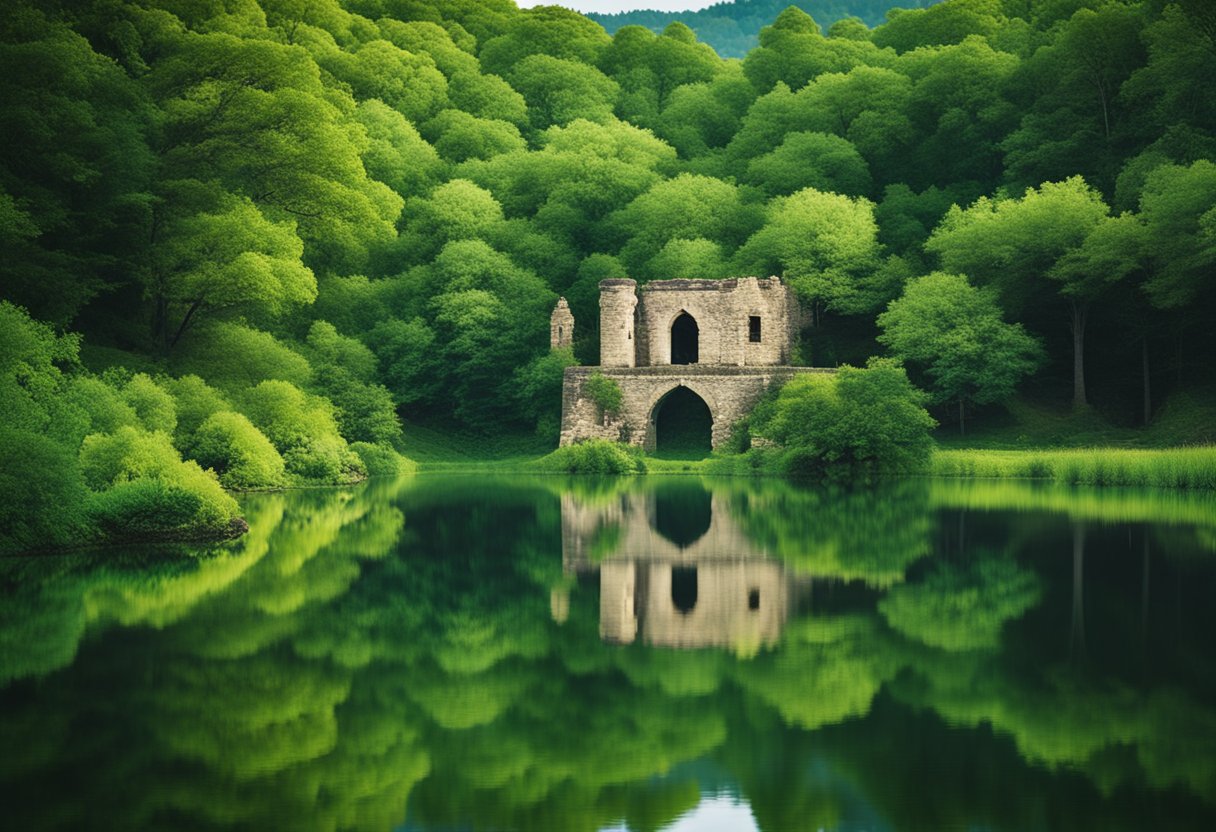
Weaving together the threads of ancient myths and the contemporary world, this section delves into how folklore continues to shape Ireland’s cultural landscape.
Historical Events Inspired by Legends
Many historical events in Ireland are deeply intertwined with legends. For instance, the iconic Battle of Clontarf, which finds roots in part as a struggle against supernatural forces from the Irish annals, echoes the country’s belief in the power of destiny and love for their land. Such events often inspire community gatherings and historical reenactments, allowing people to experience a tangible connection to their ancestral stories.
Mythical Sites and Real-World Tourism
Ireland’s landscape is dotted with sites reputed to be gateways to the land of eternal youth, such as the legendary Tír na nÓg. These locales are scenic points and crucial meeting points for walking tours led by tour guides. Visitors embark on a journey where myth seamlessly transitions into tangible experiences, exploring ruins and landscapes that narrate stories from when myth was indistinguishable from reality. This fusion generates an interactive map of Ireland’s rich folklore, accessible to all who wish to explore these fabled regions.
Folk Beliefs and Superstitions
Irish folklore is encapsulated in the vibrant tapestry of myths and superstitions passed down through generations. From the mystical fairies and banshees to the foretelling omens and curses, each carries a unique story of Ireland’s cultural heritage.
Fairies and The Fairy Faith
Fairies, or the Aos Sí, are a staple of Irish folklore, occupying a parallel world to humans. Central to the Fairy Faith is the belief in these supernatural beings’ influence on the natural world. Mischievous leprechauns, with their hidden pots of gold, and the malevolent púca are among the most recognisable. These entities are thought to wield substantial power, and numerous folk tales caution against provoking their ire. Respect for fairy forts and certain trees, considered sacred spaces of the fairies, is deeply rooted in Irish superstitions.
Omens and Curses
Irish lore is rich with omens and curses that predict or cause misfortune. With its mournful wail, the banshee is said to be an omen of death in the family. Tales of cursed individuals or families often feature in regional stories, sometimes linked to historic rebellion events. The Salmon of Knowledge is a popular legend that symbolises the pursuit of wisdom, with the belief that eating it bestows incomparable knowledge on the consumer. Recognising these signs and stories gives us profound insights into Ireland’s past and the anxieties and hopes of its people.
Cultural Heritage and Preservation Efforts
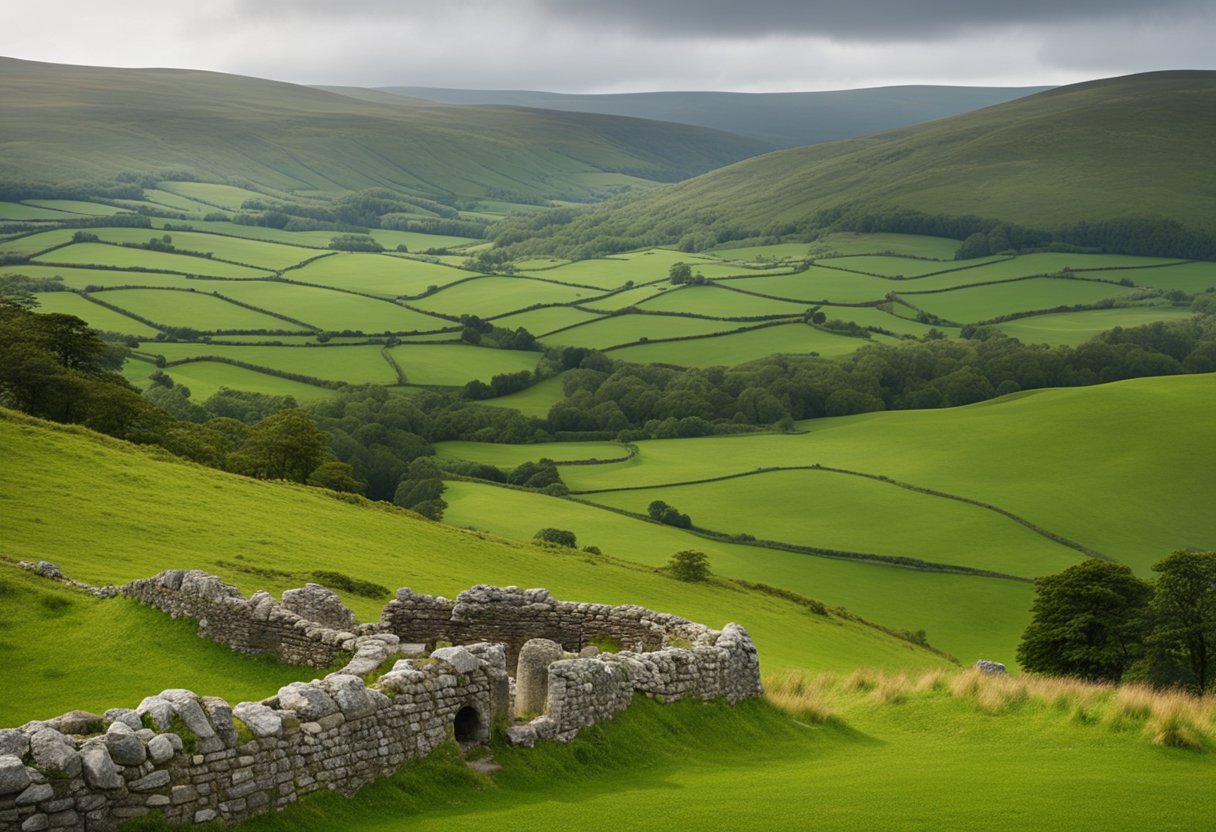
Ireland’s folklore is not just a tapestry of enchanting tales; it’s the very fabric that cloaks the landscape in cultural significance. Our preservation efforts are a testimony to a profound respect for this heritage.
Protection of Ancient Sites
We’ve witnessed a commendable commitment to safeguarding Ireland’s ancient sites, home to narratives that span millennia. From the megalithic tombs to the fairy forts intertwined with Celtic mythology, these monuments are protected not only by legislation but also by the custodial pride of local communities. In these age-old spaces, the past whispers are preserved, allowing us to walk amidst history carved by both the elements and our ancestors. Irish culture, deeply rooted in oral tradition, finds a physical counterpart in these sites, where even today, one can almost hear the echo of stories once narrated by Christian monks.
Revival of Folklore Studies
In recent years, there’s been a renaissance in folklore studies, with renewed vigour directed towards exploring Ireland’s robust oral traditions. This resurgence is essential, for the essence of Ireland’s culture continues to live and breathe through song, dance, and storytelling. Academic initiatives and community projects are working to record and revitalise folklore, casting new light on the ancient lore of the land. Our commitment extends beyond protection, seeking to understand the lineage of our narratives and ensuring they remain a vibrant part of our societal fabric.
Planning Your Mythical Journey
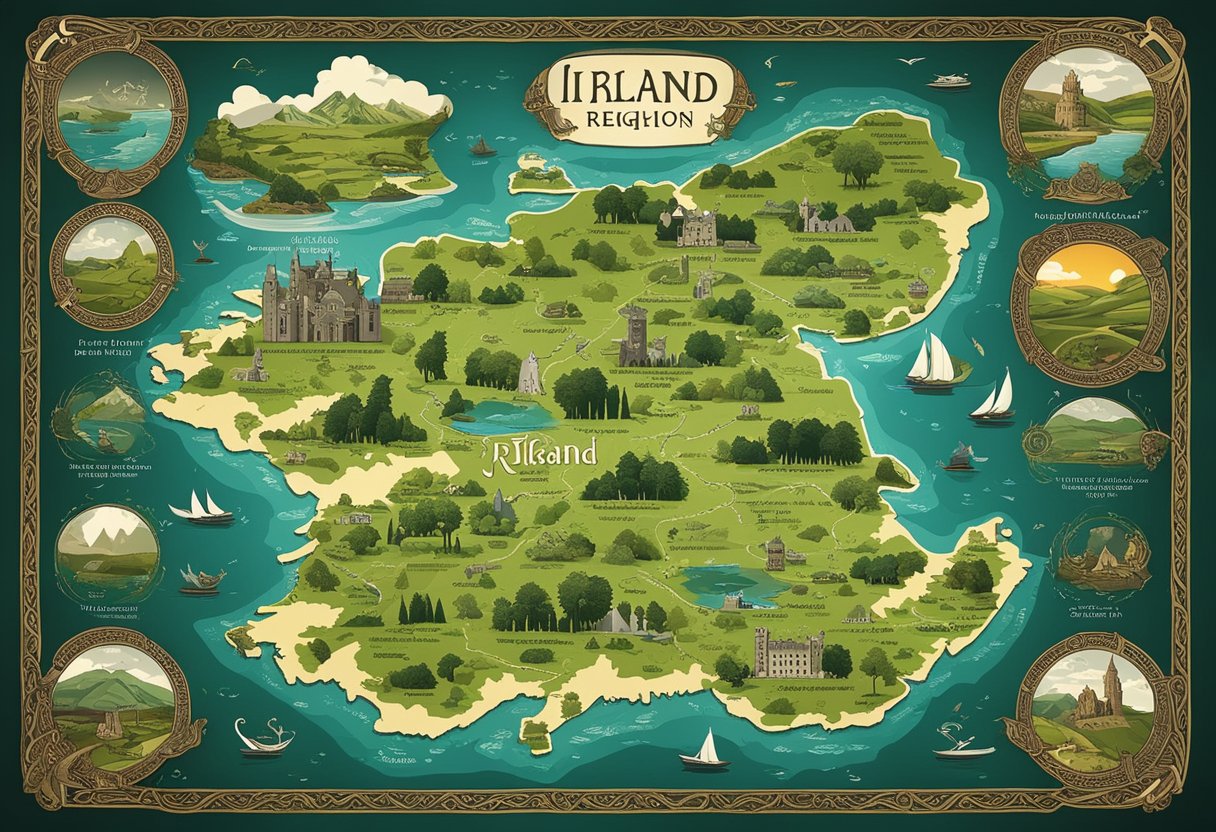
Embarking on a journey through Ireland’s mythical landscapes requires careful planning. We must gauge our routes, brush up on visitor information, and consider accessibility options to ensure an unforgettable adventure through the folklore regions.
Routes and Destinations
Ireland’s rich tapestry of myths and legends is best explored through thoughtfully chosen routes. A stroll through the Temple Bar area in Dublin can immerse travellers in the city’s vibrant history. Beyond the capital, venturing to Antrim provides insights into tales of giants that have shaped the stunning coastal scenery. The Georgian Quarter extends an elegant backdrop for exploring Ireland’s bygone narratives.
Suggested Routes:
- Dublin: Explore the legendary Temple Bar area and its surroundings.
- Antrim: Visit the Giant’s Causeway and uncover the myths of mighty giants.
- Limerick: Discover the tales of the Wild Atlantic Way.
Visitor Information
To fully enjoy the journey, ensure clarity on practical elements like refunds and cancellation policies. Many mythical destinations offer wheelchair accessibility, making the epic stories of Ireland’s past accessible to all. Always check ahead for the latest information.
Key Visitor Points:
- Refunds/Cancellations: Know the policies to avoid any disappointments.
- Accessibility: Confirm the sites cater to any special requirements.
Frequently Asked Questions

In navigating the rich tapestry of Ireland’s folklore, we encounter various questions about the island’s mythical heritage. Below, we address some of the most common queries to help elucidate Ireland’s storied past and the role of mythology in shaping its cultural identity.
What are the most renowned tales featured in Ireland’s Mythological Cycle?
Ireland’s Mythological Cycle brims with renowned stories, most notably the epic “Táin Bó Cúailnge”, which details the exploits of Cú Chulainn, the Hound of Ulster. Also celebrated are the “Four Treasures of the Tuatha Dé Danann” and the “Children of Lir” tale.
How do Irish myths and legends reflect the country’s culture and identity?
Irish myths and legends are inseparable from the nation’s culture and identity, reflecting ancient beliefs, societal norms, and the spiritual connection of the Irish people to their land. Pivotal themes of heroism, fate, and the natural world within these stories speak volumes about Ireland’s past and values.
Could you elaborate on the significance of folklore in Irish history and society?
Folklore has been instrumental in Irish history and society, serving as a vessel for collective memory and a source of national pride. It preserves the wisdom of ancestors, perpetuates traditional customs, and offers a lens through which to view Ireland’s unique social evolution.
What are some celebrated characters from Irish mythology, and why are they significant?
Celebrated characters like the noble warrior Fionn mac Cumhaill, Queen Medb, and the mystical Morrigan hold significant places in Irish lore. They embody bravery, cunning, and sovereignty, serving as enduring symbols of Ireland’s cultural ethos.
How do Ireland’s fairy tales and urban legends differ from traditional myths?
Fairy tales and urban legends of Ireland often focus on moral lessons and contemporary societal issues. In contrast, traditional myths usually revolve around larger-than-life characters and the existential questions of ancient societies. The former tend to be more localized and reflect more recent cultural shifts.
Can you identify the core regions in Ireland known for their rich folklore traditions?
The core regions in Ireland renowned for their rich folklore traditions include the rugged landscapes of Connacht, the storied hills of Ulster, the ancient East with its historical treasures, and Munster, famed for its music and storytelling heritage. Each region boasts its own unique myths and folk tales.




